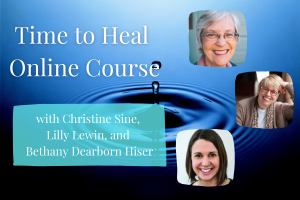by Rev. Brenda Griffin Warren,
Image of St. Ninian of Whithorn preaching to the Picts of Scotland in the 15th c. manuscript,
Book of the Hours of the Virgin and Saint Ninian [EUL MS 42] in the University of Edinburgh Library.
NINIAN OF WHITHORN
Feast Day, August 26/September 16
Encircling Prayer
On this 26th day of August, we meet Bishop St. Ninian of Whithorn. He is considered to be the first apostle to Scotland.
Ninian, also known as Ringan and Trynnian, was a very industrious apostle, missionary, and Bishop, to say the least! Ninian evangelized not only the southern Picts who lived in western Scotland, but he also preached throughout southern Scotland, south of the Grampian Mountains, and conducted preaching missions, as far north as the Moray Firth. It is possible that he preached as far south as the Lake District of England.
Ninian’s famous monastery that he founded was at Whithorn, located in Southwest Scotland, and is considered by some to be the “cradle of Scottish Christianity.” Whithorn may have originally been named Candida Casa as in Latin it means, “white or shining house.” In Old English, this was translated as whit æurn from which was derived Whithorn. It is said that Whithorn was built of stone painted a gleaming white which was reminiscent of the Roman churches cloaked in marble.
Ninian was born about 360AD, most likely in the area now known as Cumbria in Northwest England, perhaps near the city of Carlisle and Hadrian’s Wall built by the Romans. His father was either a priest or the chief of a local tribe that held land on both sides of the Solway Firth, a narrow inlet of the sea that forms part of the border between England and Scotland.
It seems that Ninian, like many of the other Celtic saints, must have been a lover of nature and creation. Edward Sellner in his Wisdom of the Celtic Saints records the story of St. Ninian and his encircling prayer. St. Ninian liked to visit his flocks and the huts of his shepherds. He wanted the flocks of sheep to also be partakers of the blessings like humans were. When the animals were gathered together in one place at the end of the day, Ninian raised up his hand and prayed that they would all be protected by God. Then he went around the flock and with his staff, drew a circle around them, praying that all within that circle would be safe.
As we are in a time of pandemic in which over 4.4 million have died worldwide as of August 2021 and some of those surviving this horrific Covid disease are sadly being left with lifetime disabilities. Pastors, church leaders, parents, grandparents, siblings, pharmacists, EMS, along with a huge contingent of medical personnel and hospitals are particularly overwhelmed and exhausted with all the extra care and services that they are providing during this pandemic. We will also remember those who are ill with Covid and those who have heartbreakingly lost loved ones to this devastating illness. This would be an appropriate time for all of us to encircle them in our prayers for strength, wisdom, courage, healing, hope, comfort, and protection.
Caim/Encircling Prayer
Circles have always been important to the Celts. Even the early medieval Celtic and Anglo-Saxon monasteries were often placed inside a circular enclosure as St. Ninian’s Whithorn Monastery likely was.
Encircling prayers, also known as caim prayers, are especially dear to the soul of the Celts. The word caim is a Gaelic word derived from the root word for “circle” and for “turn.”
These encircling prayers are often used to pray for protection and healing and are certainly appropriate for each of our lives and our world during this unusual time in modern-day history.
As you pray a caim prayer as St. Ninian did, draw an imaginary circle clockwise with your index finger around yourself or around the person or group of people or pets for whom you are praying. You can stay in one place and circle with your finger or you can physically turn your body clockwise as you pray and point with your index finger. Here is an example of how you might pray a caim/encircling prayer:
Encircling Prayer
(Caim Prayer)
Circle (name of person, pet, hospital, organization), Lord.
Keep (name the good you want or desire) near and
(name the problem/disease to be removed) afar.
Circle (name), Lord.
Keep comfort near and discouragement afar.
Keep peace and protection within and turmoil out.
Circle (name), Lord.
Keep hope within and despair without. Amen.
May St. Ninian’s prayerful influence continue to be felt in our world that is in desperate need for healing, hope, and the good news that we are infinitely loved and cherished by the God of the universe.
If you would like to learn more about St. Ninian and other Celtic and Anglo-Saxon saints, you are invited to click on the link to my site, www.saintsbridge.org
Embark on this healing journey with Christine Sine, Lilly Lewin, and Bethany Dearborn Hiser with the Time to Heal Online Course. Each session is lead by one of our instructors and allows you 180 days of access for only $39.99. The goal of this course is to provide time, space, and tools to work toward healing.


